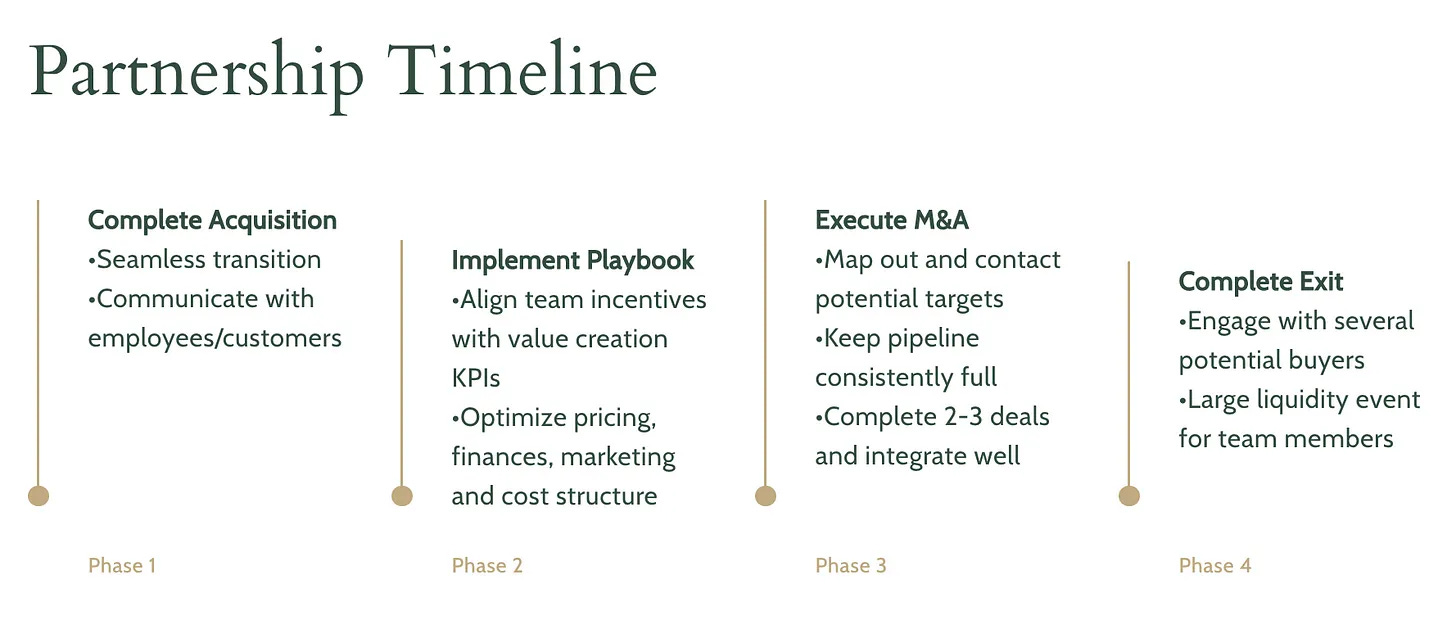Business Returns vs Investment Returns- What's The Difference?
Atlasview Insights -- bite-sized weekly insights that are relevant to all business owners, dealmakers, and investors.
Happy Wednesday folks!
We are thrilled to have you join us for another edition packed with valuable content for small business owners, deal makers, and investors alike.
For those who may be unfamiliar with us, Atlasview Equity is a private equity firm specializing in software and tech-enabled businesses. To learn more about our experienced team and investment criteria, visit us here.
In this newsletter, we cover:
Business Returns vs Investment Returns Breakdown
Atlasview’s Investment Criteria Breakdown
Our Favorite Reads
Insights From Our Team
If you enjoy what you read, please be sure to subscribe and share with your colleagues.
Preferred Investment Criteria
We look for the following characteristics in our partner companies:
Industry: Software and tech-enabled businesses
Business Profile: Sticky B2B customer base
Size: Minimum $1m EBITDA or $5m ARR
Geography: The US & Canada preferred
Whether you’re a business owner interested in working with us, or an intermediary with a deal to share, always feel free to reach out and get in touch with us!
Business Returns vs Investment Returns
Though heavily linked and correlated, business returns (or quality of the business) and investment returns (or quality of the investment) are two separate concepts.
Some investors analyze one and overlook the other. But it’s important to consider both when investing in any business. It’s possible to have a high-quality business that delivers poor investment returns.
Business Returns
Let’s take a business that runs a factory. The business spent $100k to build the factory and it produces $15k each year in net profit. Keeping it simple, this business is generating a 15% return on invested capital (ROIC). And management is confident that it can reinvest those profits at a 15% ROIC over the next 10 years.
Assume that the cost of capital is 3%, we can conclude that this is a great business based on the relatively high ROIC it generates. (and stepping outside of this example, I can tell you from experience that there are not many businesses out there that can generate 15% ROIC over a long period)
So is this business a great investment? Well, that depends…
Investment Returns
The business is earning 15% on the capital it invested into its assets, but that doesn’t mean an investor will earn 15%. It could be more, or less, depending on a few factors.
If an investor purchased this business for 20x earnings ($300k), and after 10 years of ownership, the business is worth 10x earnings ($600k based on the 15% earnings growth), the investor would have earned an internal rate of return (IRR) of 7%. This is under half of the business ROIC, not great. Flip the entry and future multiple (so 10x and 20x respectively), and the investor would earn a 23% IRR, an amount that exceeds the business ROIC.
The entry/future multiple can make a drastic difference in the investment returns, and therefore the quality of investment. A high enough entry value and or a low enough future value, and you generate a poor IRR, even with a high ROIC business.
Key Takeaways For Long-Term Investors
Businesses that generate a high ROIC usually have great unit economics/margins and enjoy some sort of competitive moat or advantage. They often trade for a premium multiple, and rightfully so.
A business that can consistently reinvest its earnings at a high rate of return will outpace a premium entry multiple, but only if given adequate time to do so. The longer your hold period, the more ROIC will influence your investment returns. And, in fact, over a long enough hold period, investor’s IRR will converge with business ROIC. In the above example, where the investor paid 20x entry price, if you hold that business long enough and it continues to reinvest its earnings at 15%… investor IRR will eventually increase from 7% to 15%.
So long-term investors should focus on business ROIC, and not worry about paying a high entry multiple, right?
The challenge is, not only is it very hard to predict a business’s ROIC over a long period, it’s rare that a business can sustain a high ROIC. Nothing grows to the moon, profitable reinvestment opportunities disappear over time and as businesses get larger its ROIC inevitable shrinks. This is why discipline on the entry multiple is important. Because if a business’s ROIC doesn’t live up to expectations and or the premium entry multiple ends up being too high (in relation to the future multiple), this will result in a poor investment IRR.
Now this isn’t to say that cheaper is always better. Oftentimes, businesses are cheap because the quality of the business is terrible. But in rare circumstances, high-quality businesses do trade for attractive entry prices. These businesses may be out of favour, too small/under-covered, misunderstood by the market, experiencing temporary setbacks, owned by forced seller(s), or some other non-business fundamental reasoning. These are the opportunities you want to seek.
All long-term investors need to answer:
Why will this business generate high ROIC?
Why am I able to purchase it for an attractive multiple?
We’ve seen far too many people focus on one and ignore the other. Though the first question is the more important one for any long-term investor, the second question shouldn’t be overlooked for two reasons:
You want to ensure that it is, in fact, an attractive multiple. As we’ve just covered, a high enough entry value/low enough future value and you may have a high-quality business but a low-quality investment
You want to ensure that you didn’t incorrectly answer the first question about business quality. The market might be pricing in some sort of risk on the business that you’re missing. The multiple might be attractive because it is actually a business that will generate a low ROIC.
Answering both questions solves for both business quality + investment quality. Half of being a great investor is finding businesses that generate a high ROIC. The other half is finding opportunities where the entry price will allow for a high IRR.
If you’re an owner interested in working with Atlasview or an intermediary with a deal to share — feel free to reach out and contact us. We will respond within 24 hours, and we can have an offer on the table within 7 days.
We are happy to pay referral fees for any deal referred and successfully closed.
Our Favorite Reads
Atlasview Insights <> Deal Bridge Media
This newsletter was powered by the team at Deal Bridge Media. Deal Bridge builds newsletters for M&A firms to help them generate more inbound deal flow.
Does your investment firm want to start a newsletter? Get in touch with Deal Bridge today!
Insights from our Team
Operations
Investing
About Us
Atlasview Equity is a private equity firm specializing in software and tech-enabled businesses. We combine patient capital with proven operational strategies to deliver predictable results for our stakeholders.








